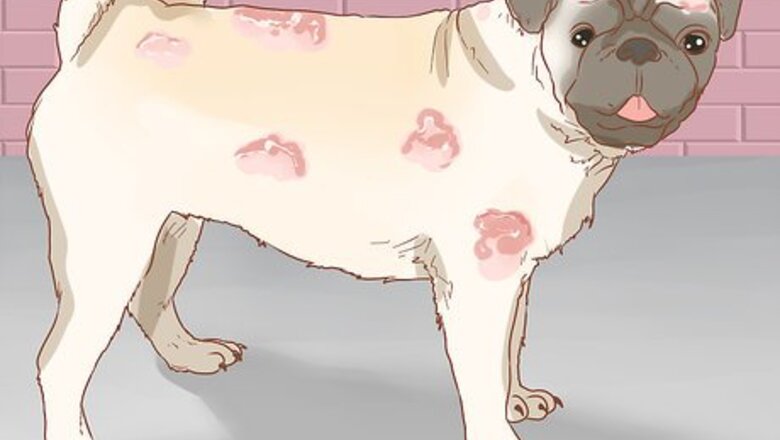
views
Treating a Fungal Infection on the Skin
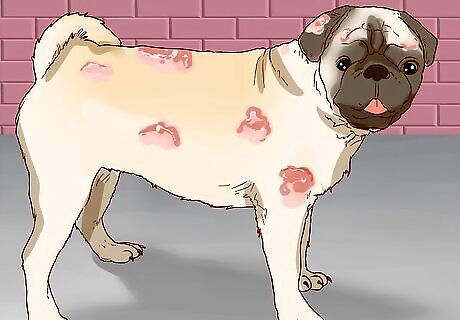
Look for signs your dog has a fungal infection on its skin. Yeast and other fungi are normally all other a dog's skin, however, when the populations of this fungi expand, usually due to a lack of immune response from the dog, then an infection can take hold. If your dog is itching a lot or has spots of discoloration, crusty or flaky skin, or redness, it may be caused by a yeast infection on its skin. One reason dogs often get yeast infections is because they are on immunosuppressive drugs for other health conditions. If your dog's immune system is being suppressed for other health reasons, then a yeast infection can more easily take hold. Don't let your dog lick any patches of skin that look infected.

Look for signs of ringworm. Ringworm is the most common fungal infection in dogs. It typically causes circular lesions on the dog's skin that cause hair to fall out, and which can become inflamed and scabby. If you think your dog has ringworm, you'll need to take it to the vet for topical and/or oral treatments.

Watch injuries to the skin for fungal infections. There are types of skin fungal infections other than yeast infections, including Candidiasis, which are rare in dogs but can take hold if your dog has a preexisting injury. If your dog is being treated for an injury, be on the lookout for infection and discuss any infection with your veterinarian. Treatment for this type of infection is similar to that of a yeast infection but the originating injury just needs to be taken into consideration as well.

Consult with a veterinarian. Discuss the symptoms your dog is experiencing with a veterinarian in order to decide whether your dog needs to be seen. If your dog's symptoms are very serious, such as open sores due to itching and scratching, then is probably should be seen quickly, before the infection advances further. If the symptoms seem less serious, then you can probably wait to see if they clear up or discuss the issue with your veterinarian during your dog's next appointment. When the dog is assessed by a veterinarian he or she will ask you about the symptoms, will look at any areas of irritation, and may take a culture in order to give a specific diagnosis and treatment.
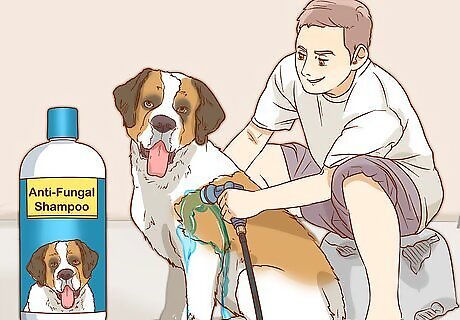
Follow your veterinarian's suggestions for treatment. Your veterinarian may prescribe a variety of treatments, depending on the seriousness, location, and type of infection. These treatments could include a medicated shampoo, a topical medication, or a variety of anti-fungal medications that are taken orally. Oral treatments are prescribed for more serious and chronic infections that will need long-term treatment. Many oral treatments for fungal infections require months of taking the medicine to clear up the infection.
Treating a Respiratory Fungal Infection

Look for symptoms of a respiratory fungal infection. With infections such as aspergillosis or nasal aspergillosis, common fungal infections of the respiratory system, the dog will experience coughing, a hard time breathing, nasal discharge, pain in the nose, sneezing, and sometimes a bleeding nose. If your dog has these symptoms, it may have a fungal infection in its respiratory system. Many of these symptoms can indicate other infections as well. A veterinarian can help you figure out what specific illness your dog has, as well as how it can best be treated.
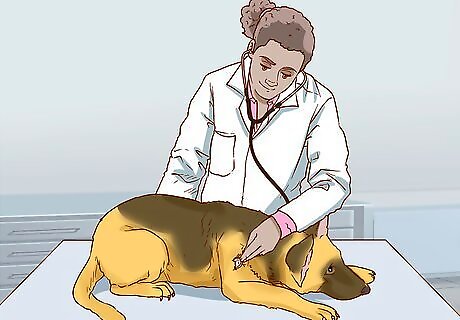
Get your dog veterinary care. If your dog's symptoms persist, and it is uncomfortable or in pain, contact your veterinarian. Discuss whether your dog needs to be seen by the veterinarian or if the condition is not that serious and you can wait to see if your dog's immune system eliminates the infection. In general, if your dog just has clear nasal discharge or a light cough, then the infection is usually not that bad. However, if your dog's nasal discharge is thick and yellow or green, the dog is bleeding from its nose, coughing deeply, or coughing up blood, then the infection could be more serious. EXPERT TIP Ray Spragley, DVM Ray Spragley, DVM Veterinarian Dr. Ray Spragley is a Doctor of Veterinary Medicine and the Owner/Founder of Zen Dog Veterinary Care PLLC in New York. With experience in multiple institutions and private practices, Dr. Spragley’s specializations and interests include non-surgical management of cranial cruciate ligament tears, Intervertebral Disk Disease(IVDD), and pain management in osteoarthritis. Dr. Spragley holds a BS in Biology from SUNY Albany and has a Doctor of Veterinary Medicine degree (DVM) from Ross University School of Veterinary Medicine. He is also a Certified Canine Rehabilitation Therapist (CCRT) through the Canine Rehab Institute as well as a Certified Veterinary Acupuncturist (CVA) through Chi University. Ray Spragley, DVM Ray Spragley, DVM Veterinarian Fungal infections should be taken seriously. Mild fungal skin infections may clear up through gentle cleaning and preventing licking. However, aggressive cases or respiratory infections require urgent vet care. This is especially true for certain endemic fungal types based on region, where delays can worsen prognosis.
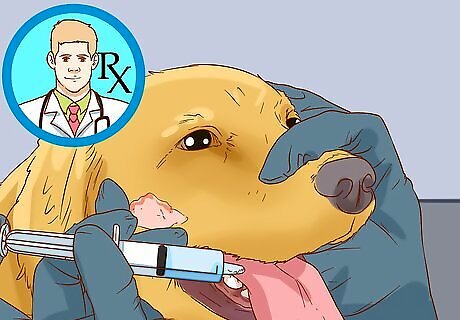
Follow treatment recommendations. Aspergillosis and nasal aspergillosis can both be treated with an anti-fungal drug. This will be given to the dog either in the mouth or in the nose. Follow your veterinarian's instructions for how and how long to give your dog the medication. As with many medications, be sure to give your dog the medication for as long as the veterinarian tells you to, even if the symptoms have gone away. This will help to assure that the infection is totally eliminated, not just that is has been suppressed but is still in the nasal cavity.
Treating a Dust Borne Fungal Infection
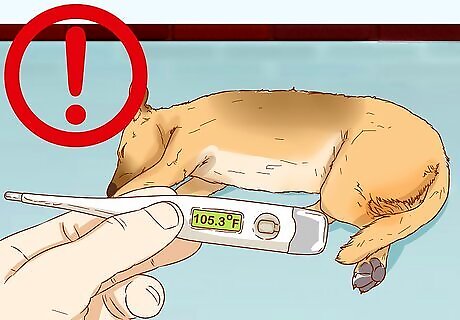
Look for symptoms. If you live in a dry, desert region, such as the American Southwest, then your dog could get a fungal infection call Coccidioidomycosis, also known as Valley Fever. This infection is dirt borne and it when it enters the lungs it can cause dogs to cough, lose their appetite, lose energy, have diarrhea, and get a fever. Dogs that dig in the dirt can be especially prone to this illness, as they have more chance of contact with the fungus. Not all dogs that are exposed to this fungus develop symptoms or the illness. Dogs with strong immune systems can oftentimes fight off the infection before it takes hold.

Contact your veterinarian. If you suspect that your dog has Valley Fever, then you should contact your veterinarian and describe the symptoms and when they started. Your veterinarian will then suggest whether or not they think the dog should be brought in to be assessed. If your dog is brought in for assessment, the veterinarian will test the dog's blood for antibodies to Valley Fever, which is called a "titer test."

Follow your veterinarian's suggestions for treatment. If your dog is found to have Valley Fever, then it will need to undergo treatment with antifungal medications. This treatment takes a long time, up to a year if the infection has taken hold in the lungs, and perhaps for its lifetime if the infection is in the dog's nervous system. This treatment can have adverse side effects, including vomiting and damage to the liver. Because of this, the dog will need to be monitored regularly by its veterinarian.
















Comments
0 comment